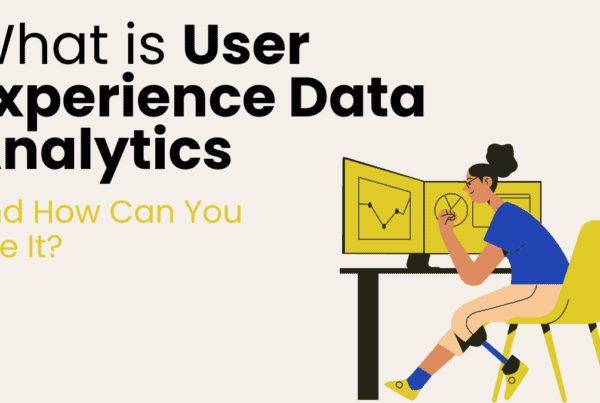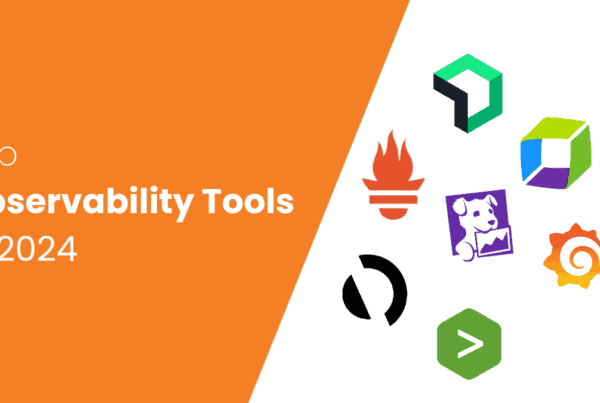
When we think about buying things online, we usually picture a website, right? Have you ever wondered how online stores work behind the scenes? Nowadays businesses use various technologies to create and manage their e-commerce websites. One of these technologies is Headless Commerce.
It might sound like a funny name, but it’s a cool way to showcase products online. As per WPEngine’s report, 64% of enterprise firms now use the headless strategy. This number has been increasing in recent years.
Webnexs says that the headless commerce market will reach USD 3.9 billion by 2025. This represents a compound annual growth rate (CAGR) of 22.9% from 2021 to 2025.
Let’s dive in and learn all about it!
What is Headless Commerce?
Imagine you want to build a car. You could buy a car kit that comes with all the parts you need, or you could buy the parts separately and build the car yourself.
Headless technology is like buying the parts separately. You can choose the best parts for each part of the car, which can lead to a better car.
In the same way, headless technology allows you to choose the best technologies for the front-end and back-end of a website. Which can lead to a better user experience.
Looking for a technical definition of headless commerce? Here it is.
Headless Commerce refers to a unique process of e-commerce website development. In this method, the e-commerce website is created in two parts i.e. front end and back-end. Front-end is the part of the website that users see. The back end is the part that manages the data and processes. These both parts are decoupled to build a headless commerce website.
It means that the front-end presentation layer can be built using any technology. And the back-end commerce functionality is handled by a separate platform. Both parts will work together to give the best of both worlds.
Imagine you want to buy a new toy from an online store. You go to the website and see all the toys you can buy. The part you see is called the front end, and the part of the website that provides you with the data is called the back end.
This means that you can use the best technology for each part of the website. This procedure of development can lead to a better user experience.
For example, you could use a React front-end for its speed and flexibility, and a Java back-end for its scalability and security. The choice of platforms depends on the needs of the website.
Popular Examples of Headless Commerce Platforms
Headless commerce platforms are great for creating flexible and dynamic online shopping experiences. Let’s look at some examples and see how they’re doing:
- Shopify Plus: Shopify Plus is a popular eCommerce platform. It can handle lots of traffic and transactions at the same time. Many small and big businesses use it for their online stores.
- BigCommerce: BigCommerce is doing well too. It has a user-friendly interface and helps businesses deliver personalized experiences. Customers can find and buy products on these sites.
- Contentful: Contentful is a fast content delivery platform. It lets businesses update their content fast on websites and apps. It’s popular among developers and brands.
- Magento Commerce: Magento Commerce is also doing great. It helps businesses build feature-rich online stores with fast loading times. Checkout processes are secure and smooth.
These headless commerce platforms perform well. They have been helping businesses create fantastic shopping experiences for their customers. They are a good choice for anyone who wants a flexible and high-performing online store.
How Does Headless Commerce Work?
This modern approach to online shopping separates the front end from the back end. It’s like having two superheroes working together to give you an awesome shopping experience!
Imagine you’re shopping for some cool new sneakers. When you visit a headless commerce website, the front-end part takes center stage. It’s the stylish storefront where you browse through all the snazzy shoes. This front end is built using technologies like React, Angular, or Vue.js, making it super smooth and user-friendly.
![[your-subject] - EyeUniversal superhero](https://www.eyeuniversal.com/eyenew/wp-content/uploads/2023/08/superhero-min-1024x799.jpg)
Now, let’s see how the headless commerce superheroes team up to make everything work:
The Front-End Hero
As you scroll through the sneaker collection, your clicks and actions are like signals to the front-end hero. It sends requests to the back end behind the scenes, asking for product details, prices, and availability.
Continuing with the example we have taken, when you click on a specific sneaker, the front-end hero asks the back-end for the shoe’s size options and colors.
The Back-End Hero
The back-end hero receives the front-end’s request for the sneaker’s size options and colors. It quickly checks the inventory to ensure the requested size and colors are available.
This behind-the-scenes champ holds all the data and business logic. It doesn’t care about how the front end looks; its job is to manage product information, inventory, and order processing.
The API Connection
The front-end hero speaks English, and the back-end hero understands Python. But thanks to the API connection, they can communicate effortlessly!
This is the secret communication line that lets the front-end and back-end heroes exchange information. They use Application Programming Interfaces (APIs) to understand each other’s language.
![[your-subject] - EyeUniversal headless commerce working](https://www.eyeuniversal.com/eyenew/wp-content/uploads/2023/08/Depositphotos_133370550_L-min-1024x737.jpg)
Completing the Purchase
When you finally find the perfect pair of sneakers, the front-end hero helps you add them to your cart. Then, it calls on the back-end hero to handle the payment and order confirmation.
After clicking the “Buy Now” button, the front-end hero sends your order details to the back-end hero. The back-end processes the payment and sends you a confirmation email.
Headless commerce lets these superheroes work independently. So, while the front-end hero focuses on giving you a fantastic shopping experience, the back-end hero ensures everything runs smoothly behind the scenes.
With this powerful duo on your side, you can enjoy a fast, flexible, and seamless shopping journey. Whether you’re buying sneakers, clothes, or gadgets, headless commerce has got your back (and front)!
Benefits of the Headless Method
According to BigCommerce’s survey, 66% of e-commerce decision-makers intend to adopt a headless commerce strategy in the upcoming year. Headless commerce offers some benefits, including:
Faster and Smoother Websites
Headless commerce decouples the front end from the back end, which allows for faster and smoother websites. This is because the front end is no longer responsible for processing orders or managing inventory. This setup can free up resources and improve performance.
Easier to Adapt
77% of organizations with headless architecture say it enables faster changes to storefronts. This is a major benefit for businesses that need to be able to adapt quickly to changing market conditions.
Headless commerce makes it easier for businesses to adapt to changing market needs and customer demands. This is because the front end can be updated independently of the back end, which allows businesses to quickly experiment with new features and designs without affecting their core operations.
Improved Flexibility
Headless commerce gives businesses more flexibility in choosing the front-end technology that best meets their needs. This can lead to better user experience and better engagement, as businesses can tailor the front end to the specific needs of their target audience.
Enhanced Personalization
Headless commerce makes it easier for businesses to personalize the customer experience across different channels. This can help businesses to build stronger relationships with their customers, which can lead to increased sales.
Superpowers for Businesses
Headless commerce gives businesses the ability to connect their online stores with other cool apps and tools. This can give businesses a competitive edge and allow them to offer their customers a more seamless and integrated shopping experience.
Challenges with the Headless Method
There are a few challenges linked with headless commerce, including:
Difficult to Manage Content
One challenge with headless commerce is that it can be more difficult to manage content. With a traditional e-commerce platform, content editors can use a WYSIWYG (What You See Is What You Get) editor to make changes to the website’s appearance.
However, with headless commerce, content editors need to use a more technical interface to create and manage content. This can be a barrier for some businesses, especially those that don’t have a lot of technical expertise.
Difficult to Integrate
Another challenge with headless commerce is that it can be more difficult to integrate with third-party applications. With a traditional e-commerce platform, businesses can use pre-built integrations to connect their website with other applications, such as payment processors or shipping carriers.
With headless commerce, businesses need to build their integrations. This can be a time-consuming and complex process.
More Expensive
Headless commerce can be more expensive than traditional e-commerce platforms. This is because businesses need to invest in both a headless CMS and a front-end presentation layer. The total cost of ownership for headless commerce can be higher than traditional e-commerce platforms, especially for businesses with small budgets.
Despite these challenges, headless commerce can be a good choice for businesses that need more flexibility and control over their online presence. However, businesses should carefully consider the challenges before making the switch to headless commerce.
It is Expensive but How Much?
As per WPengine, organizations spend on average $2.6 million for implementing the headless architecture. This is a significant investment, but it can pay off in the long run by increasing agility and flexibility.
The cost of headless commerce development can vary depending on several factors. Here are some of the factors that can affect the cost of headless commerce development:
- The size and complexity of the project: The more complex the project, the more expensive it will be to develop. This is because there will be more work involved in decoupling the front end from the back end, as well as in integrating the front end with other systems and applications.
- The chosen headless commerce platform: The cost of headless commerce development will also vary depending on the chosen headless commerce platform. Some platforms are more expensive than others, and some platforms require more customization than others.
- The level of customization required: The level of customization required will also affect the cost of headless commerce development. If a business requires a high level of customization, the project will be more expensive than if the business is happy with a more standard solution.
As a rough estimate, the cost of headless commerce development can range from $50,000 to $500,000 or more. However, it is important to note that this is an estimate, and the actual cost of a project will vary depending on the factors mentioned above.
Here are some examples of companies that offer headless commerce development services and their pricing:
- Commerce Layer: Commerce Layer offers a headless commerce platform that starts at $50,000 per year.
- Elastic Path: Elastic Path offers a headless commerce platform that starts at $50,000 per year.
- Contentful: Contentful offers a headless CMS that can be used for headless commerce. Pricing starts at $300 per month.
- Shopify Plus: Shopify Plus offers a headless commerce solution that starts at $51 per month.
It is important to note that these are a few examples, and the actual cost of headless commerce development will vary depending on the specific project.
Conclusion
Headless commerce is a growing trend in the e-commerce industry. It offers many benefits, including increased agility, flexibility, and personalization. If you are considering a headless commerce platform, be sure to do your research and find the right platform for your needs.
Some of the factors you need to consider when choosing a headless commerce platform include your budget, your needs, and your team’s skills.
References:
- https://blog.webnexs.com/headless-ecommerce-statistics-market-size-an-overview/
- https://wpengine.com/resources/the-state-of-headless-global-research-report/
- https://www.elasticpath.com/blog/How-Much-Does-It-Cost-to-Implement-Elastic-Path
- https://www.contentful.com/pricing/
- https://retail.economictimes.indiatimes.com/news/industry/80-businesses-plan-to-implement-headless-architecture-in-next-2-years-salesforce-report/93591045
- https://www.bigcommerce.com/articles/headless-commerce/
- https://www.shopify.com/enterprise/headless-commerce
- https://www.sana-commerce.com/e-commerce-terms/what-is-headless-commerce/
- https://vuestorefront.io/headless-commerce
- https://www.salesforce.com/blog/define-headless-commerce/
- https://en.wikipedia.org/wiki/Headless_commerce



